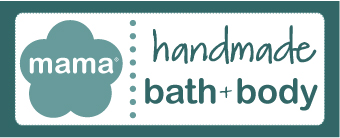-
Product Description
COMMON NAME
Standardized: white mustard
Other: yellow mustardBOTANICAL NAME
Brassica alba Rabenh.
Plant Family: BrassicaceaeSYNONYMS
Brassica alba, Brassica hirtaOVERVIEW
Yellow mustard may be famous today as a ball park condiment, but the spice has a long history as both a food and medicine. Yellow mustard seeds are one of the most popular and widely used varieties of mustard, and they are an important herb in many cultures worldwide. Despite a pungent bite, they are milder than their close relative, brown mustard, and are usually substituted when a less piquant flavor is wanted. Yellow mustard seed powder is often used to season regional culinary dishes such as hollandaise dressing, soups, sauces, marinades, and various spice rubs.Our yellow mustard powder is ground from organically cultivated Brassica alba seeds. Besides its use in culinary applications, yellow mustard seed powder can also be employed for its wellness supporting qualities. Various traditional herbal practices utilize the spice both internally and externally for its healthful properties ranging from botanical infusions to foot soaks and herbal baths. Greek physician Dioscorides first described a topical mustard plaster almost two thousand years ago and it remains a popular folk remedy today.
PLANT DETAILS
Brassica alba is an herbaceous perennial with simple, alternating leaves, and flowers with four free sepals, four alternating petals, and two short and four long free stamens. The plant is a member of the Cruciferae, or cabbage family, and has similar traits to some of the other members. Distinguishing features of yellow mustard, sometimes referred to as white mustard, include bright yellow flowers and fruit pods that are horizontal, hairy, ribbed, and swollen around the seeds.HERBAL WISDOM
Mustard seeds have an extensive history steeped in folklore and are cited in several ancient religious texts. It is hypothesized that the Romans were the first to use mustard seed as a condiment. The Roman civilization would blend crushed mustard seeds with must (fermenting grape juice) to make a sauce. It makes sense then, that the word mustard is said to come from the Latin phrase “mustem ardens” which translates to “burning must”.SUGGESTED USES
Yellow mustard seed powder is a key ingredient in many homemade condiments and can also be used in a diverse array of culinary dishes. The powder can be added to body care recipes, including herbal baths, foot soaks, and massage oils for warming heat.Learn how to make your own mustard bath herbal soak for tired muscles.
Learn how to make mustard at home.PRECAUTIONS
No known precautions.
We recommend that you consult with a qualified healthcare practitioner before using herbal products, particularly if you are pregnant, nursing, or on any medications.This information has not been evaluated by the Food and Drug Administration. This product is not intended to diagnose, treat, cure, or prevent any disease. For educational purposes only.
Source: Mountain Rose Herbs
-
Product Reviews
-
Find Similar Products by Category








